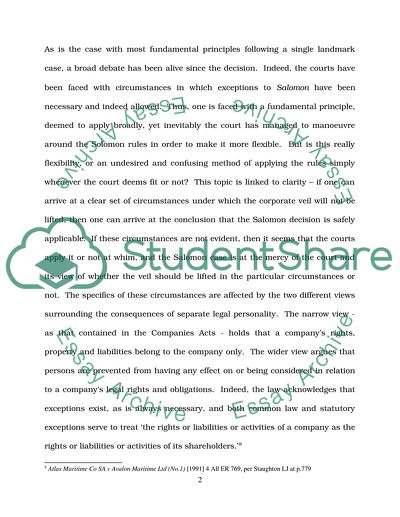Cite this document
(Salomon vs Salomon & Co Ltd Case Study Example | Topics and Well Written Essays - 2250 words - 5, n.d.)
Salomon vs Salomon & Co Ltd Case Study Example | Topics and Well Written Essays - 2250 words - 5. Retrieved from https://studentshare.org/law/1560852-company-law
Salomon vs Salomon & Co Ltd Case Study Example | Topics and Well Written Essays - 2250 words - 5. Retrieved from https://studentshare.org/law/1560852-company-law
(Salomon Vs Salomon & Co Ltd Case Study Example | Topics and Well Written Essays - 2250 Words - 5)
Salomon Vs Salomon & Co Ltd Case Study Example | Topics and Well Written Essays - 2250 Words - 5. https://studentshare.org/law/1560852-company-law.
Salomon Vs Salomon & Co Ltd Case Study Example | Topics and Well Written Essays - 2250 Words - 5. https://studentshare.org/law/1560852-company-law.
“Salomon Vs Salomon & Co Ltd Case Study Example | Topics and Well Written Essays - 2250 Words - 5”. https://studentshare.org/law/1560852-company-law.


